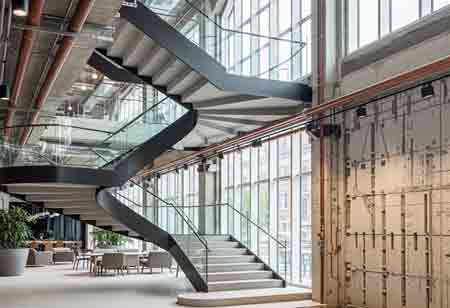Thank you for Subscribing to Construction Business Review Weekly Brief
Specials
- Apartment and Condominium Contractors Canada
- Decking Canada
- Architectural Glass Europe
- MEP APAC
- Construction Saudi Arabia
- German Apartment and Condominium Contractors
- Construction Law APAC
- Outdoor Construction
- Foundation Construction Canada
- MEP Canada
- Kitchen and Bath
- Cold Storage Construction APAC
- Precast Concrete Europe
- Construction Staffing Europe
- Pre-Construction Services
- Flooring System APAC
- Scaffolding Canada
- Swimming Pool Construction Canada
- Construction Management Canada
- Cold Storage Construction Canada
- Flooring Systems Europe
- Residential Construction
- Concrete Canada
- Construction Cladding Europe
- Construction Cladding APAC
- Concretes, Aggregates and Construction Materials APAC
- Concretes, Aggregates and Construction Materials Europe
- Commercial Contractors Europe
- Commercial Contractors APAC
- Dummy
- Construction Insulation, Coating and Waterproofing
- Construction Management APAC
- Landscaping Canada
- Construction Coating Europe
- Construction Tech Startups Europe
- Insulation Services Europe
- Mechanical Contractor Canada
- Mould Remediation and Testing Europe
- Swimming Pool Construction APAC
- Building Sealing Solutions Europe
- Construction Engineering Services
- Mechanical Electrical and Plumbing
- Roofing Systems Europe
- Architectural Glass APAC
- Startups APAC
- Construction Forensic and Owners Representative
- Flooring System
- Waterproofing APAC
- Wall Systems
- Safety and Compliance Europe
- Construction Bidding and Auctions
- Modular and Prefab Construction
- Architectural Glass
- Construction MENA
- Construction Demolition and Recycling Europe
- Modular Construction Europe
- Construction Interiors
- Steel Building APAC
- HVAC
- Doors and windows
- Construction Latam
- Building Information Modeling APAC
- Sustainable Construction APAC
- Building Restoration and Maintenance
- Commercial Contractors
- Specialty Construction
- Construction Engineering Canada
- Construction Engineering MENA
- Modular Construction Canada
- Modular Construction APAC
- Roofing and Siding Systems
- Workforce Management and Staffing
- Roofing Systems APAC
- Construction Consulting
- Steel Building Europe
- Construction Demolition and Recycling APAC
- Safety and Compliance APAC
- Concretes, Aggregates and Construction Materials
- Construction Cladding
Elevating Commercial Spaces: The Role of Specialized Construction Services in Modern Architectural Innovation
Excellence in commercial real estate design combines aesthetics with functionality, integrating specialized services such as concrete cutting and plumbing to create innovative, efficient, and resilient structures.

By
Construction Business Review | Thursday, August 14, 2025
Stay ahead of the industry with exclusive feature stories on the top companies, expert insights and the latest news delivered straight to your inbox. Subscribe today.
Fremont, CA: In the commercial real estate sector, true excellence in building design necessitates not only aesthetic appeal but also superior functionality, adaptability, and meticulous precision. Contemporary architectural innovation mandates a comprehensive approach wherein specialized construction services—including concrete cutting, sophisticated plumbing, and custom stair design—are meticulously integrated from the project's inception. This strategic alignment between architectural conceptualization and technical implementation is not merely efficient; it significantly elevates the outcome, ensuring the edifice is both visually impactful and operationally resilient.
Among these specialized services, precision concrete cutting emerges as a critical enabler, particularly within retrofit projects. Utilizing advanced tools such as diamond and wire saws, developers and architects can execute clean, accurate cuts in reinforced concrete, thereby facilitating the seamless integration of new structural and mechanical elements. This capability transforms inherent limitations into opportunities, enabling bold reconfigurations of existing spaces without compromising safety or structural integrity. By facilitating the efficient installation of plumbing systems or dramatic architectural features, such as custom staircases, precision cutting establishes the groundwork for revitalizing outdated buildings into modern, high-performance commercial environments.
Commercial Plumbing Design and Spatial Efficiency
Commercial plumbing is often a hidden hero, but its design and implementation are critical to both the functionality and aesthetic of a modern commercial space. A poorly planned plumbing system can lead to spatial inefficiencies, logistical nightmares, and costly future repairs. Conversely, a well-thought-out plumbing design can enhance a building's overall efficiency and aesthetic appeal.
The early integration of plumbing design into the planning phase enables architects and developers to optimize layouts, thereby concealing pipes, maximizing usable space, and ensuring a robust and easily maintainable system. This fusion is particularly evident in the vertical design of many commercial projects. Coordinating the routing of plumbing lines with the placement of architectural stairs, for instance, prevents future conflicts and contributes to a seamless, refined final product. The objective extends beyond mere water flow to encompass how the infrastructure supports the building's holistic design and function.
The Power of a One-Stop Firm: Streamlining the Process
The true strength of modern commercial construction lies in the seamless coordination of specialized services. Relying on separate firms for concrete cutting, plumbing, and stair fabrication often results in communication breakdowns, scheduling conflicts, and costly rework. In contrast, the value of a one-stop solution becomes increasingly evident. By consolidating these critical services under one roof, developers and architects gain the advantage of a streamlined process with a unified flow of information. Early integration ensures that concrete cutting for stairs and plumbing is aligned from the outset, while seamless execution is made possible through a shared understanding of the entire project scope. A single point of contact enhances communication and simplifies project management, keeping all stakeholders aligned. This integrated approach not only reduces delays but also promotes greater cost and time efficiency, resulting in more predictable project outcomes.
The selection of a firm providing integrated services enables commercial property developers and architects to streamline their processes and elevate their projects. This approach yields spaces where every element, from concealed plumbing to prominent staircases, functions in perfect synchronicity, resulting in structures that are not only practical and structurally robust but also genuinely innovative and inspiring. In the realm of contemporary commercial real estate, this integrated methodology is no longer a discretionary option but rather an imperative for attaining architectural distinction.





